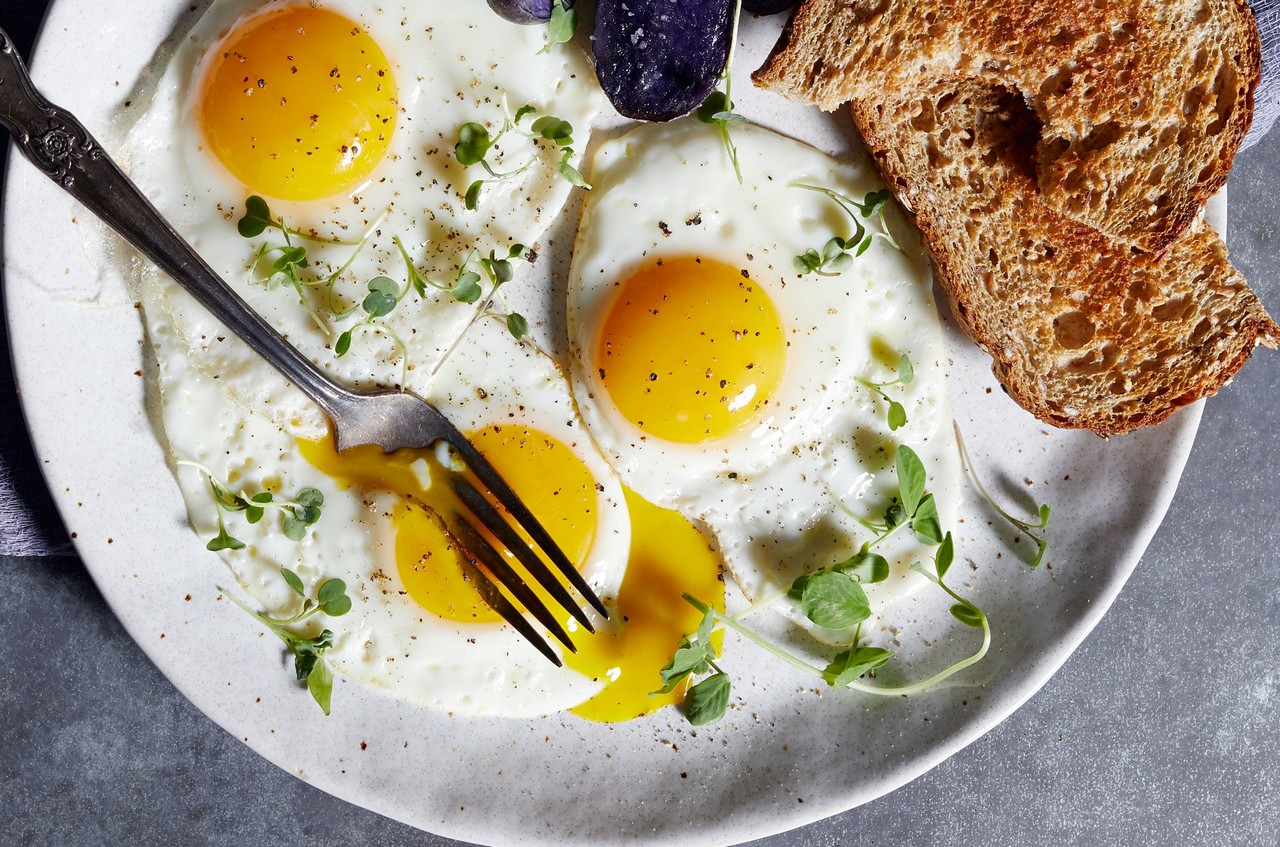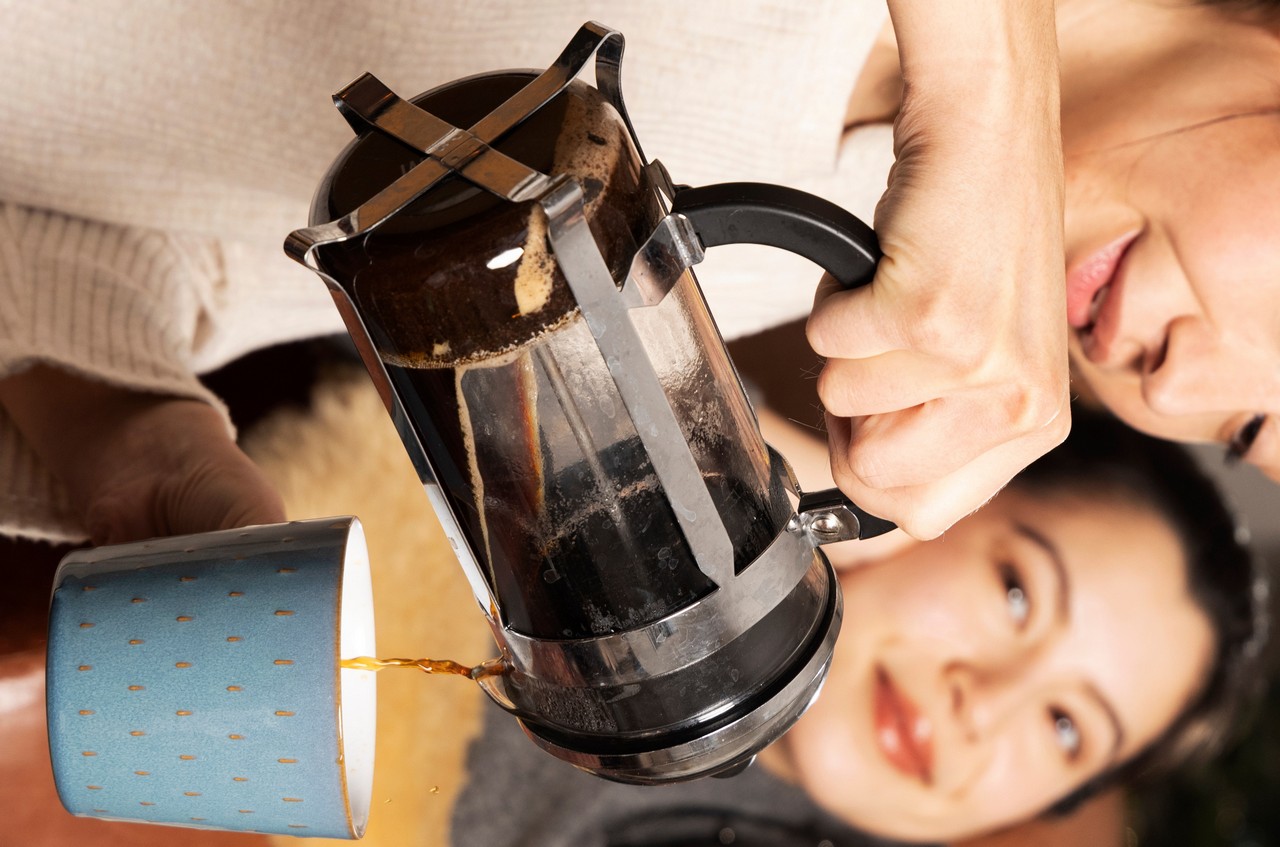How to Make the Perfect Fried Egg Every Time
There’s nothing more satisfying than cooking a perfectly fried egg. There’s also nothing more disappointing than messing it up. When I was just starting out in the kitchen, I was doing a lot of the latter. No matter how many tricks and hacks I tried, my eggs would always end up a mess—the yolks overcooked and broken, the whites somehow undercooked and runny.
Over time I realized the problem was that I was trying too hard. A perfect fried egg doesn’t require a lot of fuss, and I had definitely been fussing around too much. As long as you use the right amount of oil, the right pan, and the right temperature, you can pretty much let the egg do its thing and it’ll turn out perfect—no flipping
required.
If you’re regularly struggling with your morning fried eggs, use these tips to make the process easier. From how fresh your eggs should be to how to prevent runny whites, here’s a breakdown of everything you need to know, according to Nick Korbee, executive chef of Egg Shop in New York City and author of Egg Shop: The Cookbook.
1. Find a nonstick skillet and a rubber spatula.
Even if you don’t plan on flipping your egg, a nonstick skillet is essential because otherwise your egg will stick to the pan when you try to remove it—even if you use plenty of oil or butter. Stick with a rubber spatula to avoid scraping the seasoning off your pan when you try to remove or flip your egg.
2. Use the freshest eggs possible.
The fresher the eggs, the less likely you are to end up with runny whites, says Korbee. “Fresh eggs have tight solid egg whites that encase the yolk and a small amount of loose egg whites on the outer edge,” he explains. If you’re not sure of the freshness, he says you can tell by how runny (or not) your egg is when you crack it open.
Korbee also recommends letting your eggs come to room temperature before you use them. If you add them straight to the pan from the fridge, they’re going to bring the temperature of your pan down, which will prevent them from cooking evenly. If you can, set them out about 30 minutes before you’re ready to get started.
3. Choose your oil.
Korbee says that the two best oils for frying eggs are olive and canola. Canola oil has a higher smoke point, so it’s the better option if you want to get really crispy edges. But if you’re not shooting for crispy, olive oil will add an excellent flavor.
You can also use butter if you prefer. Just keep in mind that it has a lower smoke point than both canola and olive oil. It can burn pretty easily at a high temp, so you may need to turn the heat down a little if you’re frying with butter. And if you start to notice any brown bits as it’s heating up, wipe them out (carefully!) with a paper towel or cloth.
4. Heat the oil in the skillet.
Heat a nonstick skillet over medium-low or medium-high heat, depending on how crispy you want your egg. (If you don’t have a preference, it’s always better to err on the side of lower and slower to avoid overcooking.) Add enough oil or butter to coat the pan evenly. Swirl it around to make sure it’s fully coated and that there aren’t any dry spots. Don’t worry if it looks like there’s a lot—you’re going to strain the egg afterward so you’re not going to eat most of it.
You’ll know it’s ready if it glistens and swirls around easily.
5. Add the egg.
Crack the egg into a separate bowl (this will give you time to fish out any rogue eggshells), then transfer it to the pan from a close distance. Don’t drop it in from high up because your yolk might break. Let it cook for about three to four minutes.
To prevent runny whites, tap the unset white in three places around the yolk while it’s cooking. “This breaks the structure of the white that encases the yolk and allows the white to fall away and begin to cook,” Korbee explains. You can also spoon some of the hot oil directly onto the egg whites to help them cook faster. (This will also give them a cool bubbly texture.)
6. Choose your preferred doneness.
If you want your eggs over easy, medium, or hard, use this trick to avoid any flipping (which greatly increases the chance you’ll accidentally break the yolk): Once the white is set, Korbee says you can simply cover your pan with a lid, and let the steam finish cooking it for two to three minutes, depending on how done you want the egg to be. “Simply uncover to reveal your genius,” he says.
Most Popular
- Does Rowing ‘Count’ as Strength Training?
By Tiffany Ayuda
- This Simple Morning Habit Can Help You Sleep Way Better at Night
By Julia Ries
- 18 Hot and Horny Sex Games
By Malia Griggs
If you want your eggs sunny side up, there’s no need to cover. They usually take approximately three minutes to cook, and you’ll know they’re ready when the white is fully set and no longer transparent in any area, Korbee explains.
When your egg is finished, use the spatula to transfer it from the pan to a paper towel- or cloth-lined plate to absorb any excess oil. Finish it with a bit of salt and pepper, and serve it over whatever you like.
No 2 People With Depression Have the Exact Same Experience — a Psychologist Explains
One in five US adults experienced mental illness in 2019. Toward the end of 2020, a year t…
















